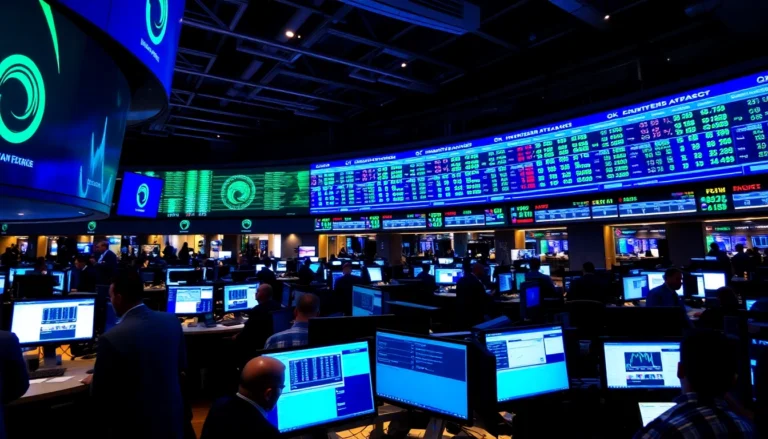Understanding the Basics of Crane Rental in the UK
In the bustling landscape of the UK construction, infrastructure, and industrial sectors, crane rental services form the backbone of efficient, safe, and timely project completion. Whether erecting skyscrapers in London, refurbishing bridges in Birmingham, or installing heavy machinery in industrial facilities across Manchester, access to reliable crane hire is indispensable. The process of crane rental encompasses a diverse range of equipment types, pricing models, and operational considerations, making it essential for project managers, contractors, and business owners to understand its fundamentals thoroughly.
For those embarking on such projects, exploring Crane rental options in the UK can significantly enhance operational efficiency. This article delves into the intricate details of crane hire—covering types of cranes available, influencing cost factors, selection guidelines, best practices for usage, cost-saving strategies, real-world case studies, and insights into future trends shaping this dynamic industry.
Types of Cranes Available for Hire
The UK crane rental market offers a broad spectrum of lifting equipment tailored to diverse project requirements. Each crane type is distinguished by its design, lifting capacity, mobility, and operational scope. Selecting the right crane hinges on understanding these classifications and matching them with project-specific parameters.
Mobile Cranes
Mobile cranes are among the most versatile and widely used equipment. They include telescopic mobile cranes, all-terrain cranes, and truck-mounted cranes. These cranes are favored for their mobility and quick setup, making them ideal for construction sites requiring flexibility. For example, all-terrain cranes combine the mobility of truck cranes with the ability to operate on rough terrain, thus expanding their application scope.
Tower Cranes
Tower cranes are essential for high-rise building projects, offering towering reach and lifting capacity. They are either self-erecting or comprise a fixed base with a jib arm that rotates 360 degrees. Their capacity to reach great heights and handle substantial loads makes them the backbone of vertical construction.
Crawler Cranes
equipped with tracks, crawler cranes are suitable for heavy-duty operations and uneven ground conditions. They typically provide high stability and can handle massive loads, making them indispensable for large infrastructure projects like bridges and industrial plant construction.
Mini and Specialty Cranes
For smaller or more specialized lifts, mini, spider, or floor cranes are ideal. These compact cranes can operate in confined spaces and are perfect for interior fits, renovation projects, or installations inside existing structures.
Selection Considerations
Choosing an appropriate type depends on project height, weight of loads, site accessibility, duration, and budget. Engaging with reputable rental providers such as Ainscough Crane Hire or Birmingham Crane Hire can help tailor the equipment choice to project needs.
Key Factors Influencing Crane Rental Costs
Understanding the variables that impact crane hire costs enables effective budgeting and negotiating favorable terms. Costs can vary widely based on several elements.
Type and Size of Crane
The selection of crane type and capacity directly correlates with rental pricing. Larger, more powerful cranes which handle heavier loads or reach greater heights command higher fees. For example, a 25-tonne mobile crane may cost around £650 per day, whereas a larger 50-tonne crane could cost significantly more.
Duration of Hire
Pricing structures typically include daily or weekly rates. Longer-term rentals often benefit from discounted weekly or monthly rates. Short-term projects might incur premium rates due to setup and mobilization costs.
Location and Accessibility
Crane hire costs are also influenced by geographic factors. Urban centers or remote sites may incur additional charges for transportation, permits, or challenging site conditions.
Project Complexity and Lifting Conditions
Complex lifts requiring multiple crane movements, special attachments, or precise timing can increase costs. Ensuring the equipment and operators are adequately prepared minimizes additional expenses due to delays or mishaps.
Seasonality and Market Demand
High-demand periods, such as summer building seasons in the UK, can inflate prices due to limited availability. Planning early and booking in advance can mitigate premium charges.
Additional Services and Equipment
Extra services like rigging, transportation, or dedicated operators often come at extra costs. Clarifying these details upfront avoids unexpected charges.
Expert Tips for Cost Management
- Request detailed quotes from multiple providers for comparison.
- Opt for mid-sized cranes suitable for the load to avoid overpaying for unnecessary capacity.
- Plan your schedule meticulously to reduce idle days and optimize usage.
- Negotiate terms, especially for extended rentals or multiple lifts.
Choosing the Right Crane for Your Project
Selecting the optimal crane involves a comprehensive assessment of project requirements, site conditions, and budget considerations. A systematic approach ensures safety, efficiency, and cost-effectiveness.
Assessing Load and Height Requirements
Determine the maximum weight the crane must lift and the height it needs to reach. For instance, high-rise construction requires tower or luffing jib cranes, while smaller indoor projects might suit mini cranes.
Site Conditions and Accessibility
Evaluate the terrain, space constraints, and proximity to other structures. Tracked cranes or compact cranes like spider lifts are appropriate for confined or uneven sites.
Project Duration and Flexibility
Short-term projects benefit from quick setup cranes, like truck-mounted variants, while long-term projects might justify the investment in tower cranes for efficiency.
Safety and Regulatory Compliance
Choosing a reputable provider ensures adherence to UK safety standards set by organizations such as the Health and Safety Executive (HSE). Ensuring proper planning and equipment maintenance minimizes risks.
Engaging Expert Consultancy
Professional rental companies can provide site surveys and technical advice to match your project with the most suitable crane types, enhancing safety and reducing costs.
Best Practices for Efficient Crane Rental Usage
Planning and Site Assessment
Comprehensive planning stage includes detailed site surveys, load analysis, and access evaluations. Pre-mobilization inspections and clear communication with the rental provider about site peculiarities foster smooth operations.
Early coordination allows for logistical planning, such as proper crane positioning, necessary permits, and traffic management arrangements, which reduces downtime and unexpected costs.
Ensuring Safety and Compliance
Adhering to UK safety standards involves regular equipment inspections, qualified operator certification, and rigorous risk assessments. Developing a safety plan aligned with HSE guidelines minimizes accidents and liabilities.
Training site personnel on crane protocols and establishing clear communication channels enhances operational safety and effectiveness.
Schedule Optimization and Logistical Coordination
Optimizing the crane’s operational schedule ensures maximum utilization and minimizes rental periods without compromising safety. Coordinating delivery, setup, and load movement reduces delays.
Utilize digital project management tools for real-time updates and coordination among stakeholders, improving response times and ensuring project milestones are met.
Cost-Effective Strategies for Crane Rental
Comparing Rental Providers in the UK
Thorough market research is critical. Consider the reputation, fleet size, equipment quality, and customer reviews of providers like Ainscough or Birmingham Crane Hire. Comparing quotes, included services, and after-sales support ensures value for money.
Utilize aggregators or platforms that specialize in crane hire to access multiple quotes simultaneously, saving time and benefiting from competitive pricing.
Negotiating Rental Contracts and Terms
Leverage volume or long-term rental agreements for discounts. Discuss flexible scheduling options and inclusion of additional services such as rigging, transportation, or operator provision to bundle costs effectively.
Clarify cancellation policies and liability clauses to avoid unexpected penalties, and seek contractual warranties for equipment performance and safety.
Maximizing Equipment Utilization
- Schedule lifts during optimal weather conditions.
- Coordinate multiple lifts to minimize mobilization charges.
- Plan your work to avoid idle periods, thereby reducing overall rental days.
- Implement proper maintenance and inspection routines to prolong equipment lifespan and avoid costly repairs or replacements.
Case Studies: Successful Crane Rental Implementations
High-Rise Building Construction
In central London, a commercial skyscraper project utilized tower cranes supplied by a leading UK provider. Precise site planning and crane selection—self-erecting models capable of reaching 80 stories—allowed seamless steel and facade material lifts. Detailed logistical coordination minimized downtime, enabling the project to meet tight deadlines.
Infrastructure and Maintenance Projects
In Birmingham, a bridge refurbishment project employed crawler cranes for their stability and lifting capacity. The project’s success hinged on rigorous safety protocols and expert operator training, showcasing the importance of partnering with experienced providers to handle complex lifts under demanding conditions.
Industrial Facility Installations
A factory expansion in Manchester relied on mobile cranes for rapid equipment installation within confined spaces. Cost-effective planning and multi-project scheduling optimized crane rental costs, demonstrating how strategic management of resources yields significant savings and project acceleration.
Future Trends and Innovation in Crane Rental Services
Technological Advancements and Equipment Modernization
The UK crane hire industry is witnessing rapid technological progress, including the integration of IoT sensors for real-time maintenance alerts, GPS tracking for logistics, and automation features enhancing safety and efficiency. Modern cranes are more fuel-efficient, environmentally friendly, and equipped with safety enhancements such as obstacle detection systems.
Environmental Sustainability and Eco-Friendly Cranes
Sustainability is increasingly vital. Electric and hybrid cranes are emerging as eco-friendly options, reducing carbon footprints on construction sites. Companies investing in green technologies position themselves as industry leaders committed to environmental responsibility.
Integrated Rental Platforms and Digital Management
Online platforms facilitate seamless booking, tracking, and management of crane hire. Digital interfaces allow clients to schedule lifts, monitor equipment status, and streamline communication with providers, significantly reducing administrative overhead and enhancing project transparency.






